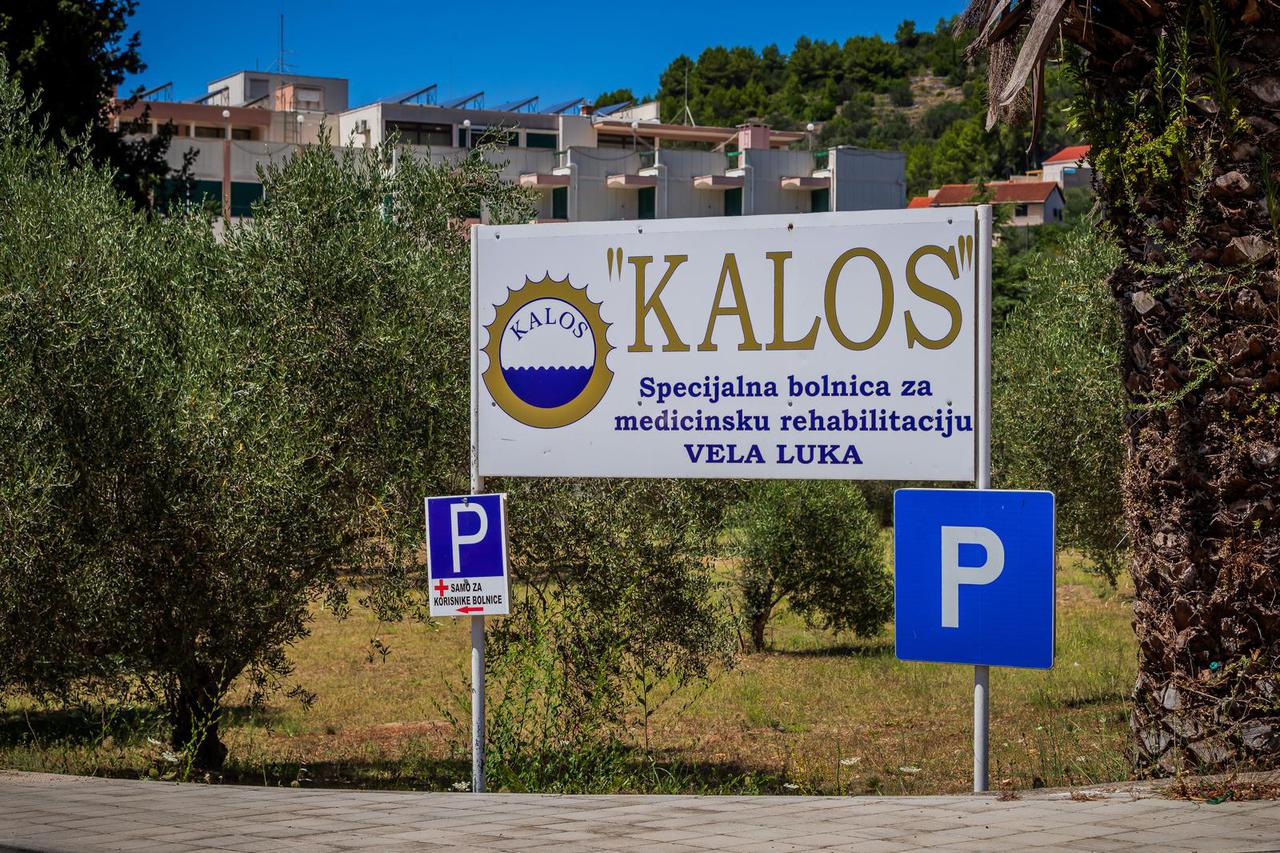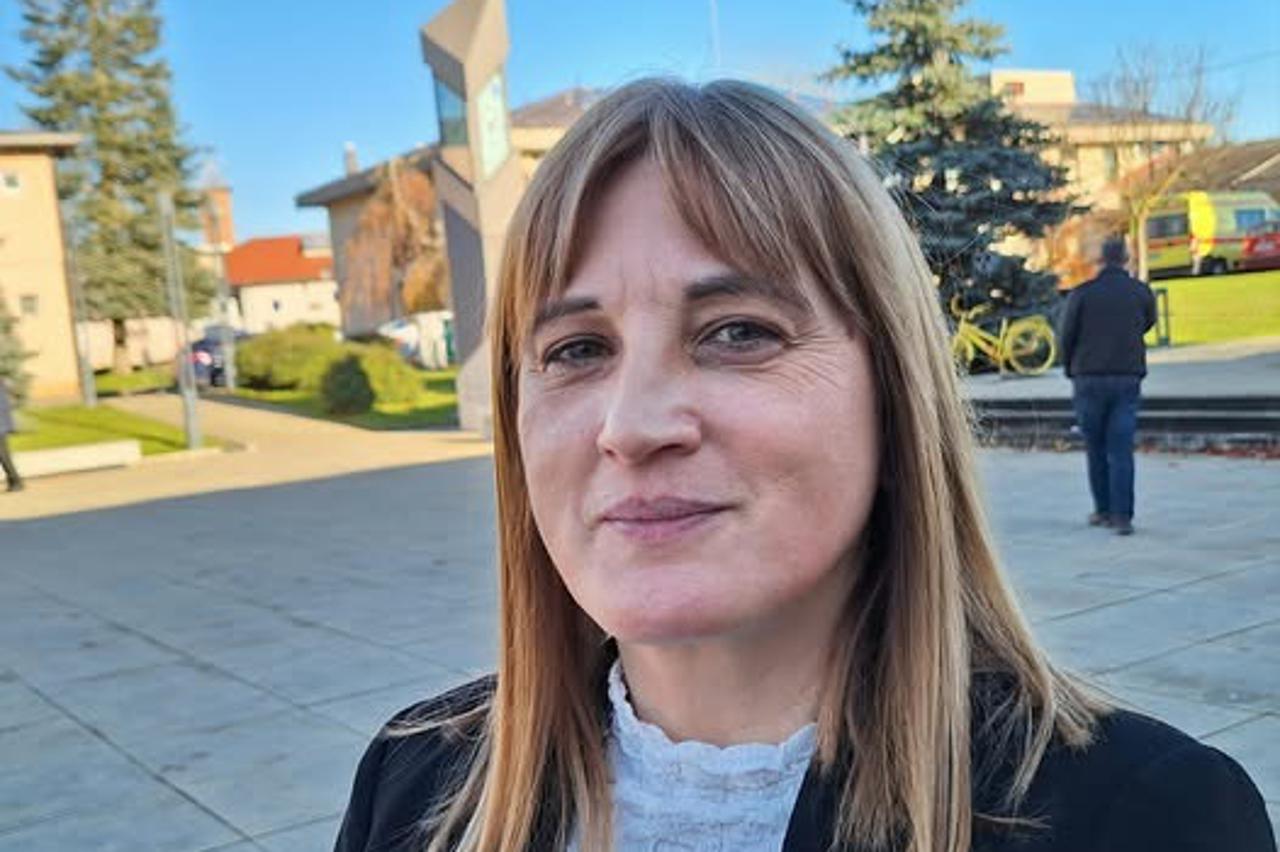While striving to predict the changes resulting from biomedical research and their application by 2068, it has to be pointed out that it is impossible to make accurate predictions. Nevertheless, changes in biomedicine are tipically slightly slower compared with those that we are witnessing in other branches of science and technology. This is due to the fact that applications of breakthrough treatments of patients need to undergo strict assessments in terms of their safety and any side-effects need to be meticulously recorded. This to a certain extent slows down the pace of application of new knowledge and insights in medical practices.
Historically, the development of medicine was based on simultaneous development of two completely different approaches. In case of the first approach, which has been prevalent over the last two centuries, important new discoveries about physiology, i.e. mechanisms of functioning of human organism, resulted from serious scientific research. They were subsequently applied in the development of new drugs, preventive interventions in healthcare, as well as procedures, technologies and devices for diagnostics, treatment and rehabilitation of patients. Concerning the second approach, using the method of trial and error, a large number of herbalists, medicine men, shamans and druids resorted to experimental treatments. They used the widest possible range of approaches, from chasing evil spirits away, while using different charms or drilling holes in the skull to using diluted natural poisons, placing leeches on the skin, wearing different necklaces, bracelets, as well as using herbal products and products of animal origin. They were all intended to help those affected by different diseases, yet most such attempts had no effect whatsoever, while some even adversely affected the persons with health problems.
However, throughout human history, among so many trials and errors in treatment of people with health problems, they occasionally came across some effective natural remedies. Hence, the entire traditional medicine, resulting from experiences acquired over centuries through the method of trial and error, can legitimately be subjected to a rigorous scientific evaluation. It is highly satisfactory for scientists in biomedicine when they manage to explain the mechanisms behind the effectiveness of preparations in traditional medicine, while rejecting all those deemed ineffective. In the next 50 years we may, at least in developed countries, reach a point in which access to biomedicine based on concrete scientific evidence will systematically evaluate the overall traditional medicine and subsequently be considered as the only remaining approach to treatment in the future of humanity. We do hope that at that point the importance of quackery will wane through further progress of modern evidence-based medicine. Nevertheless, people most frequently resort to quackery in cases where modern medicine is still struggling to provide answers and is unable to offer assistance. What areas of biomedicine are likely to show significant progress in the next half century?
According to the research conducted over the past two centuries, it was determined that we are all, actually, a cluster of trillions of cells that stick firmly to one another, acting jointly and communicating in order to create our organs and assign specific roles to them. The method of functioning of most of the organs in the human body has been explained only over the last 200 years. Before that, people lived in utter ignorance, while most medicine was actually quackery. In the past century, a large number of meritorious scientists were awarded a Nobel Prize for their contribution to understanding of the function of the organs of the human body, organ systems, hormones and the senses. A scientific approach permeated with persistence and patience showed that the functions of the organs of the human body can be largely understood and that it can be explained through physical, chemical and biological laws. Behind the functioning of human organism, there are mechanistic processes, which are understandable at the molecular level. Brain is the only organ of the human body whose function we still have not succeeded in explaining in this mechanistic way. Molecules and brain cells, observed under the microscope, still have not provided us with answers in terms of the origin of human consciousness of our own existence, the flow of human thoughts, the way in which calculations are performed in the brain or how memories are stored, or in what way the unconscious is separated from the conscious.
Consequently, truly interesting research in the next 50 years will focus on insights into brain functions. These mechanisms will perhaps require some new types of research approach in order for us to understand them. One of the most ambitious such projects is the one implemented by the European Commission, worth around a billion euros. It is intended to provide a computer model of a part of cerebral cortex and then simulate the way in which connections among a huge number of neurons function and what they actually do. Simultaneously, new theories of consciousness keep appearing, as well as new types of memory storage, for which methods of experimental tests yet need to be provided. It will be interesting to follow also the efforts made by private companies, which intend to shed some light on the problem of a lack of understanding of human brain functions through development of electronic devices, which will be connected to the brain and will be able to translate information stored in the brain into a digitised form. Three companies are considered as frontrunners in this area and behind them, there are their young, intelligent and highly wealthy founders, i.e. Kernel by Bryan Johnson, Neuralink by Elon Musk and Facebook by Mark Zuckerberg. Unless we succeed in gaining insight into brain functions, we will hardly be able to make considerable progress in understanding and curing of nervous system diseases, such as autism, schizophrenia, depression and bipolar disorder, as well as memory disorders such as Alzheimer’s disease and other types of dementia. Any progress in this area will be interesting, yet also simultaneously uncertain. It is certainly difficult to predict how many conundrums concerning brain functions will be solved in the next 50 years – perhaps all of them, or maybe none, since this area is highly unpredictable.
In addition to trillions of our body’s own cells, all of which have originated from our first cell, zygote, our awareness has been continuously raising of the fact that both on our bodies and inside them, there are also trillions of cells that do not belong to us. These are bacterial cells on the surface of the skin and in the digestive system. They do not act as parasites on humans as they could easily survive without us. Bacteria are present everywhere in nature. They were among the earliest Earth’s inhabitants and have inhabited the Earth thousands times longer than humans – around four billion years. Nevertheless, humans cannot live without their help. Skin bacteria protect humans from different types of fungi, parasites and other microorganisms, while gut bacteria are necessary for food digestion. These trillions of cells of human-friendly bacteria, whose number of cells exceeds the number of human cells, are jointly referred to as microbiome. An increasing number of scientists believe that human health and diseases cannot be entirely clarified without the understanding of the role of human microbiome. Consequently, research in biomedicine in the next 50 years will be marked also by a considerable progress in terms of insight into interaction between human friendly bacteria and human cells, which make up both organs and tissues. History has taught us that not all bacteria in nature are human friendly and the same applies to viruses and different parasites. Infectious diseases caused by specific bacteria and viruses have marked human history. Before the mid-20 th century, when mass antibiotic treatment and vaccination were introduced, four out of five deaths in the world were caused by infectious diseases. Yet, how can we know which bacteria to allow entering into our body and which to host on our skin and gut, as opposed to those that we need to keep away from us and kill as soon as they enter our body? That is one of the tasks of human immune system, which is, apparently, extremely important. It tolerates all the desirable microorganisms, while protecting us from those considered potentially dangerous.
As a result of the insights gained into the functioning of the human immune system, vaccines were developed, which 50 years ago eradicated or to a considerable extent, prevented the spreading of a large number of highly dangerous infectious diseases – smallpox, tetanus, polio, diphtheria, measles, mumps, rubella, whooping cough, tuberculosis, yellow fever and a large number of others. In addition to vaccines, antibiotics played a major role in the treatment of contagions, since they kill bacterial cells, while simultaneously doing no harm to human cells. Due to them, since their introduction, the average life expectancy has almost doubled, while the world population has grown fivefold, from a billion and a half at the beginning of the 20 th century to seven and a half billion to date. Considering these trends, in the next 50 years, in terms of combating infectious diseases, we need to expect the development of vaccines against some infectious diseases that are still currently killing millions of people every year. These vaccines are, primarily, those against malaria, AIDS and a universal flu vaccine, as well as improved new vaccines against tuberculosis. Over the next 50 years, the focus will be on the problem of antibiotic resistance that bacteria have started developing. Moreover, antibiotics will develop based on brand new mechanisms that can kill bacteria. Finally, we need to expect also further discoveries that are linked with insights into the functioning of immune system.
An interesting feature of the immune system is that it can kill its own body’s cells, rather than only the unwanted and harmful bacteria. It will mobilise against its own body’s cells if they transform into the cells of a malignant tumor or in case something has occurred in the human body that turns the immune system against our own body, which is the case with the so-called autoimmune diseases. In addition, the diseases such as asthma and allergies are linked with disorders in the functioning of the immune system. Over the next 50 years, further progress in terms of insight into the functions of the immune system will help in clarifying the mechanisms of autoimmune diseases, as well as in improved prevention and control of asthma and allergies. Nevertheless, progress in the fight against malignant tumors through introduction of the so-called immunotherapy is expected with special interest.
In fact, it is generally believed that malignant tumors grow in human body rather frequently, yet human immune system continuously identifies and eliminates them. However, over the period in which human immune system is weakened by poor nutrition, fight against other diseases, a lack of sleep or psychological stress, cancer cells may avoid its "patrol". The newly grown cancer can then consolidate and spread, in which case external medical intervention is required in order to prevent it from spreading further. In the past, sophisticated methods of treatment did not exist and we were not able to use them in the fight against malignant tumors. They could only be surgically removed. Subsequently, radiation therapy was introduced as the second line of defence, since it was intended to destroy tumor cells rather than the cells of the surrounding healthy tissues. These first two methods of fight against cancer were non-selective and they did not require a comprehensive understanding of the mechanisms of the disorder within the malignant tumor itself. Then chemotherapy was introduced as the third most important weapon to be used in this fight. It took into account the specific mechanisms of cellular growth disorder. Consequently, it strived to act toxically upon cancer cells, albeit simultaneously causing unpleasant side effects for the patient. In addition to controlling the spread of cancer, all the three methods of treatment that were previously mentioned frequently resulted in unwanted destruction of a large number of surrounding healthy cells.
On the other hand, 50 years ago, the expected five year survival rate of most malignant tumors after being diagnosed was only around 20%–30%, i.e. only one out of four persons affected survived for five years. Due to surgical treatment, radiation therapy and chemotherapy, the five-year survival rate for most malignant tumors has currently reached a remarkable 70%–80%. Hence, we primarily need to be aware of the fact that over the past half-century a huge progress has already been made in cancer treatment. In the next 50 years, we can hope to see even more advanced methods of cancer treatment, which will enable the five-year survival rate for almost all cancer patients. That is certainly a huge progress compared with the prospects for cancer patients only several decades ago and it resulted from immense financial investment into science implemented by countries throughout the world and private foundations, as well as of work of a huge number of top quality scientists and physicians on countless scientific research projects.
Where could further progress in cancer treatment come from? During the last several years, as a continuation of the Human Genome Project, we have seen the development of detailed catalogues of somatic mutations in cancer cells. These insights are subsequently used while striving to understand the mutations in the function of the affected cells and in order to design and develop new medicines. The preparation of "atlases" of mutations behind malignant cell growth is currently underway in order to accurately determine the cellular processes that are disrupted by mutations. Specific markers of each individual tumor are primarily being searched for and identified. These markers are a consequence of mutations and could serve as triggers of the immune response. It would then be possible to prepare a vaccine for each person based on specific molecular features of the tumor. Furthermore, antibodies could be grown in the laboratory, which will be able to destroy tumors specific for each cancer patient. Consequently, cancer immunotherapy could see huge progress and become the fourth most important weapon against cancer, as well as potentially the most powerful one, while simultaneously the least harmful for the patient. In the next 50 years, cancer immunotherapy is expected to be successful in the treatment of advanced stages of cancer, although we are still rather far from gaining a comprehensive insight into all the mechanisms involved.
In some experimental immunotherapies the current knowledge about genetic mutations of tumors is combined with growing of own immune cells that are intended to specifically attack that particular tumor. Growing billions such immune cells outside the human body, in the lab, and their insertion back into the patient’s body through blood may identify and destroy all cancer cells in the entire human body, with no harm for the patient. In case in the next 50 years we see the development of cancer immunotherapy, it will be a highly significant advancement compared with all the previously implemented treatment methods.
We have thus far considered what we can expect in the next half century in terms of fight against infectious diseases, insights into brain functions, psychological and memory disorders, autoimmune diseases, allergies and malignant tumors and we have provided explanations concerning the actual affectiveness of traditional medicine. The objective that appears realistic and achievable in the next two decades is that almost every person upon birth can expect to live until the age of 70 and avoid death by the previously mentioned diseases. Nevertheless, upon entering old age, we start being threatened by the so-called chronic non- infectious diseases. They certainly appear to be an inevitable consequence of aging – as is the case with atherosclerosis, which leads to heart attack or stroke, as well as diabetes mellitus, chronic obstructive pulmonary disease, diseases of joints and musculoskeletal system, as well as diseases of liver, kidneys and different glands. Considering the fact that in the richest countries of the world every other newborn is already currently expected to live until the age of 100, in the next decades we need to expect a huge progress in research of the so-called healthy aging and explanation of mechanisms of onset of chronic non-infectious diseases, as well as new approaches to their treatment.
There are several phases to insights into and understanding of the causes of chronic non- infectious diseases. In general, the causes of these age-related diseases can be divided into three large groups: they can be connected with the impact of the environment on human body, with the organism’s genetic instructions and with human consciousness, thoughts and brain functions. Throughout the 20 th century, the first previously mentioned causes were intesely explored, i.e. impact on human health coming from the environment such as smoking, nutrition, alcohol, socioeconomic status, household status, healthcare availability, exposure to different physical effects and chemical substances for professional reasons, as well as to solar radiation, among others. Hence, it was concluded that there is a wide range of environment- related causes that increase the risk for onset and progression of age-related chronic diseases. However, cases in which exposure to only one of such risks results in disease progression are extremely rare. Age-related diseases are most frequently linked with different combinations of several existing environment-related risks.
During the first two decades of the 21 st century and upon completion of Human Genome Project, the focus shifted on clarifying the genetic component of age-related chronic diseases. A quest for genes linked with the progression of such diseases was launched. However, as was the case in the example with environment-related risks, in this case, too, it proved that behind every chronic disease, there is the action of hundreds of different genes, yet each of them exerts an extremely slight individual effect. Following these insights, we currently need to conduct a meticulous research also of the effects exerted by one’s state of mind, such as positivity or negativity of one’s thoughts in general, depression or mania and primarily chronic stress on one’s health and the onset of chronic diseases. Progress has been made in this area only in initial stages, as we will need to gain substantially deeper insights concerning the functions of the brain in order to be able to reach more concrete conclusions.
Nevertheless, a conclusion can already be reached that most cases of age-related chronic disease are caused by a combination of a large number of environment-related and genetic- related effects exerted on the same person over a longer period of time, which eventually results in the onset and progression of the disease. Consequently, a general conclusion reached following the conducted research is that each person is both a separate and specific experiment in space and time with their own specific combination of environment-related, genetic and probably also psychological risks. Hence, in the next 50 years, the so-called personalised medicine will be increasingly gaining in importance in modern medicine. An innovation of this medicine will be the fact that those suffering from the same disease will no longer be undergoing identical method of treatment, as the treatment will be adjusted to each individual patient, based on an extremely large quantity of data available on each patient. Firstly, an analysis will be performed both of the specific disease type and of the "architecture" of its causes considering the personal genetic profile, as well as both of the environment-related and psychological risks. It is only at that point, based on large amounts of such information, that adequate treatment will be selected. This will significantly increase the effectiveness of both medicines and other medical interventions, through computer- assisted data analyses, while simultaneously decreasing or even absolutely avoiding the unwanted side effects for each patient. Thanks to such individualised profiling of each disease for each patient, in the next 50 years we will be witnessing the licencing of some existing medicines for a wide range of diseases if behind them there is an identical molecular mechanism upon which the medicine takes effect.
Considering such a complex "architecture" of patterns and samples behind age-related chronic diseases, even the future biomedical research will rely on the potential of powerful computers and huge amounts of data about each patient. The so-called data sciences will be included in biomedical research that will be based on building of large so-called biobanks, with biological samples of millions of people stored for analyses and long-term preservation. Further insights will most frequently result from computer projections, which will, irrespective of previous insights, or any previously made hypotheses, systematically analyse all these massive amounts of data and predict who may be affected by a specific disease and when. In addition, in general, the use of the so-called wearable devices, which continuously monitor and record a large number of processes in human body and the networking of users in a huge database, may help in making predictions of diseases for other most similar members of the network, based on the health data of some of the members of such network. That would enable us to warn them of dangers of e.g. stroke or heart attack immediately before the onset of these diseases.
Moreover, in the next 50 years, advancements in early diagnosis, treatment and rehabilitation in cardiovascular diseases, diabetes mellitus, chronic obstructive pulmonary disease and other chronic diseases will result in the use of a wide range of modern technologies in medicine. Robotic surgery will assume an increasingly important role in surgery. In addition, the so- called nanorobots may be patrolling inside blood vessels and the digestive system, intended as miniature robots who have been assigned specific tasks to, for example, identify and clean the points of atherosclerotic stenoses. The issue of the development of artificial organs from stem cells will be increasingly frequently addressed, as well as that about 3D-printed organs made of special materials, e.g cartilage or joints or about bioprinters and their products, such as printed pancreas or heart. The issue of special concern is what the statistics of accidents and injuries will show in the next half century. On an annualised level, accidents result in a huge number of deaths and are the third most common cause of death in many countries of the world, following cardiovascular diseases and malignant tumors. Technological innovations such as autonomous vehicles, computer analysis and simulation of a large number of situations in risky workplaces, as well as automation of a wide range of work processes, are intended to permanently decrease the incidence of road traffic accidents and accidents in the workplace.
The essay has thus far addressed a broad topic that medicine will focus on in the next decades, i.e. healthy aging. Nevertheless, it is important to highlight another broad topic, focused on substantial extension of human lifespan. A very difficult question is how long will average life expectancy be in 50 years’ time? Will it be shorter, more or less equally long as it currently is, slightly longer or considerably longer than today? It is not completely clear why an organism, after it has fully developed, does not continue its existence for much longer in time, once it has passed the incredible path from its first cell to the final shape in space, as well as the specialisation of trillions of connected cells for the performance of their functions? What are our biological constraints? We have currently almost managed to fully optimise our environment in the most developed countries of the world and hence an increasing number of people living there are starting to live up to their biological limit to lifespan, i.e. the age of 105 to 115. However, eventually everyone dies, as there are at least three obvious biological constraints to our endlessly long life. Firstly, the number of possible consecutive cell divisions is limited by telomeres at chromosome ends. This means that human cells cannot divide indefinitely. We can only speculate about the reasons for the existence of this limit. Upon disorders in terms of control of their growth, malignant cells can divide indefinitely, otherwise tumors would soon stop their own growth. Tumors show us that this limit can in principle be overcome, albeit at a price of transfoming cells into uncontrollably growing tumor cells. The second problem is the piling of mutations in genetic instruction of our cells, which occurs over time. Genetic record in each human cell, which is supposed to correspond to that in our first cell, is not entirely stable.
DNA molecule can be damaged by UV rays, as well as by free radicals and in many other ways. Due to the piling up of mutations, we are gradually transformed into a pale imitation of the human being that we were at the point of inception, from the information aspect. It would help if in some way we were able to stabilise mitochondrial membrane, to prevent the oxygen used for energy in oxidation processes in the cell from exiting mitochondria, since its compounds react with the DNA molecule in the nucleus and damage it.
An important human aging mechanism that also needs to be considered is the fate of our so- called stem cells. In fact, although the cells in human body gradually specialise in order to be able to play their specifically allocated roles, only rare cells remain "pluripotent", i.e. similar to the cells from the very start of our development. It is important to highlight that any other type of mature cells can develop in adulthood from these stem cells.
Stem cells in all tissues are very important, since, as mature cells deteriorate, they can be continuously replaced by stem cells. Consequently, the average age of cells in the human body is actually only around ten and it does not correspond to our chronological age, measured starting from our birth. Nevertheless, subsequently the renewal of the cells of the human body that have already been used up also slows down, probably due to the fact that even stem cells are subject to all the previously described cell decline processes. In case we learnt how to recover them, then probably, all our tissues would recover more easily.
The third huge constraint is the fact that we gradually lose our memory over time. We are starting to realise that even the permanent grey cells of the brain, which are the only ones that do not divide and do not renew themselves, in order to store memories from the early age, also probably have their expiry date – just like stem cells – and are considered as one of our important biological constraints. After eight decades of memory storage, it appears that they, too, are slowly starting to deteriorate and the incidence of memory loss rises considerably.
A limited number of cell divisions, a gradual disintegration of genetic instruction stored within a DNA molecule and stem cell decline and the indivisible grey cells of the brain with a gradual memory loss are three obvious constraints that nature set for humans, so that we cannot live much longer than until the age of 100. Nevertheless, if we could solve these problems, we could hope for a considerably longer life expectancy. Interestingly, in the light of the latest breakthroughs made by the 21 st century science, none of the three problems seems unsolvable anymore. At this point, we know how to use genetic mutation to make specialised cells in our body transform back into the unspecialised status of stem cells. Each such cell can subsequently be stimulated to grow into a new, cloned human organism, an organ or a tissue. Moreover, we have learnt how to change our own genetic instruction through genetic engeneering and using the CRISPR-Cas9 method. That method enables accurate snipping out of parts of genome in living cells, as well as insertion of different sequences of genetic instruction and the repair of any damage.
What is actually aging is a crucial question that needs to be clarified in the next 50 years. That is a very important question, since the strategies for increasing life expectancy will greatly depend on the answer provided. If human aging occurs following a programme, then we need to find out whether it is possible to reprogramme that biological process. However, if human organism has been programmed only for development and aging is a completely neutral process that results in the deterioration of human body over time, then we need to focus on slowing down that deterioration. If we are striving to live considerably longer than the age of 100, we will need to start interfering in human biological system and genetically modify or blend with machines in order to additionally extend our life expectancy. We will consequently enter an entirely new era for humanity, whose course of events is very difficult to predict.
The wealthiest people will be prepared to pay for a possibility of a life considerably longer than the age of 100 and will be truly interested in keeping abreast of the latest scientific breakthroughs in this field. Most experts agree that progress is highly predictable, yet it is also simultaneously marked by substantial ethical doubts. The first step will be to find out why the replacement of some "letters" or codes in human genome can result in disease. Subsequently, we need to identify ways to correct all these harmful mutations using methods such as CRISPR-Cas9. Nowadays, for the first time in human history, we are able to cure exceptionally hereditary diseases through active correction of mistakes in human genome. From the ethical aspect, this step is the least controversial. In the next 50 years, "the correction" of such mutations will be increasingly available, which will enable patients to live a life that will resemble that lived by other people in terms both of its length and of quality.
Nevertheless, the next step is considerably more questionable from the ethical aspect. The technologies that we are developing will enable people who are healthy, yet whose features are ordinary, to change their own genome in order to become taller, stronger, more intelligent and more attractive. Can we allow such genetic mutation in humans? That is a much more difficult question. Furthermore, it does not refer only to living persons, but also to their children in the future. Wealthy couples would be able to pay for genetic modifications of their fertilised egg cells in order to get the so-called designer babies, whose facial features will be programmed and so will the colour of their eyes and hair, their height, muscle strength and cognitive abilities. This procedure is currently becoming possible from the technological aspect, yet it is highly questionable from the ethical aspect.
In the next phase, will will gain a deeper insight into the genomes of both animal and plant species. We will understand mechanisms due to which birds have a considerably better eyesight compared with humans; dogs have a better sense of smell and antelopes a more acute sense of hearing. We will also understand some senses developed by other species, those that humans do not have– such as echolocation – due to which bats can see in the dark or the senses of eels intended for changes of electrical potential in the environment. Hence, we will be able to start "stealing" interesting solutions provided for other species through evolution. At that point the previously described genomes of unusual life forms will step into the spotlight, such as those of tardigrades, axolotl, naked mole rat and some bacteria that are incredibly resistant to a wide range of environmental conditions. Through taking over and adoption of their superhuman features that already exist in nature, humans could modify into practically indestructible living beings who neither age nor get ill, have additional senses and are even adapted to life in outer space.
The time in which all that will become possible is approaching at breakneck speed, yet there are simultaneously huge ethical dilemmas. Both public debate and the laws are lagging behind the pace of development in this field. After the previously described phases of "repairing the human genome" and that of "stealing other species’ genomes", in the final phase humans will gain a good insight into the genomes of all living organisms on Earth. Then we will be able to design even brand new life forms and invent currently non-existent properties. It is difficult to grasp the ethical implications of this final step. Through this final phase, which has already been named as "synthetic biology", it should become clear that we are unstoppable in our determination to overcome all the constraints set up for us by nature and heading towards a considerably longer lifespan. Humans are the first species, among many millions of living species on Earth, to have developed the possibility of changing one’s genetic instructions, yet we do not have any previous experiences that we could rely on. History may record such rapid acceleration of human evolution as our greatest success, or perhaps even as the biggest mistake that we have ever made.
Also watch: Igor Rudan on AI:











































